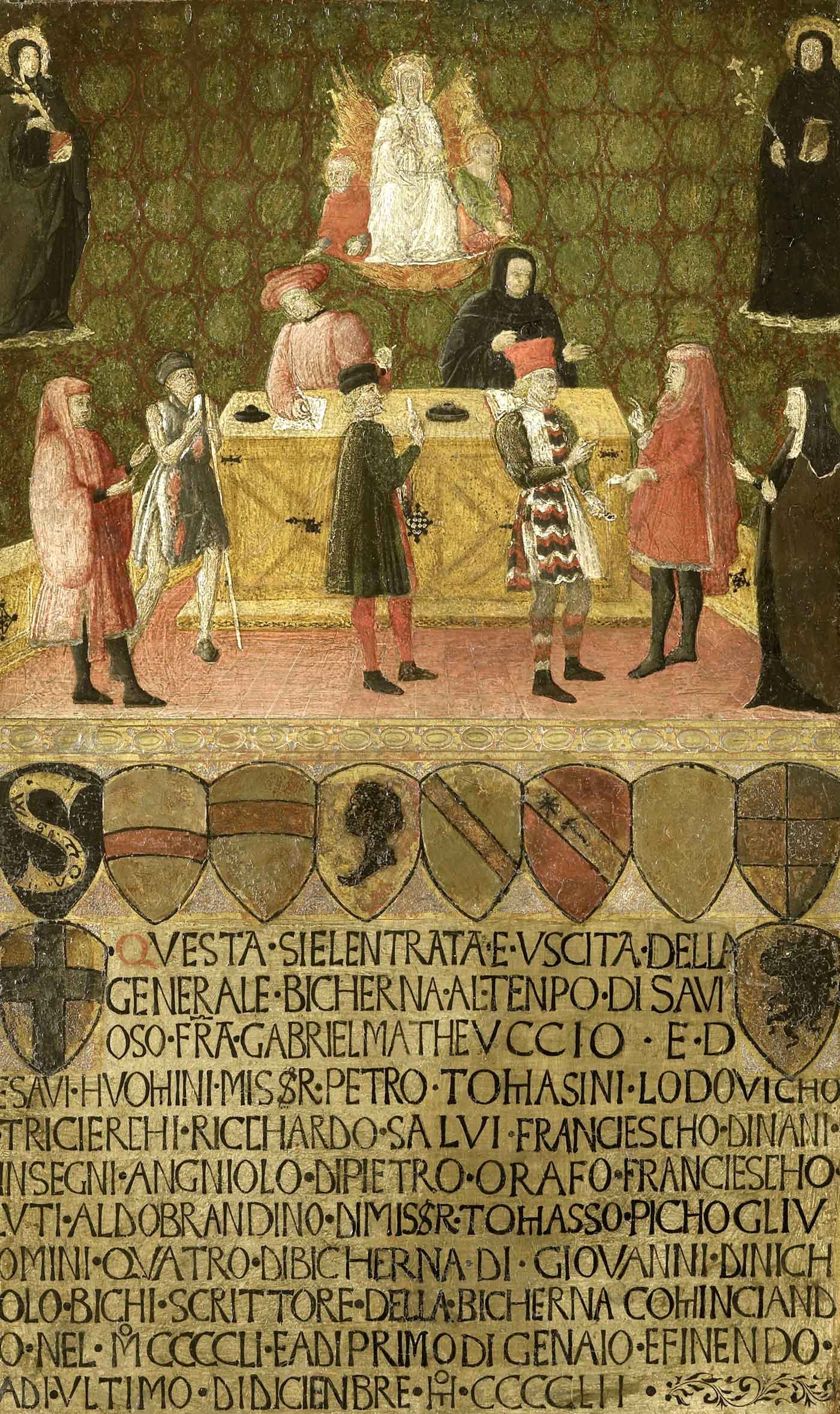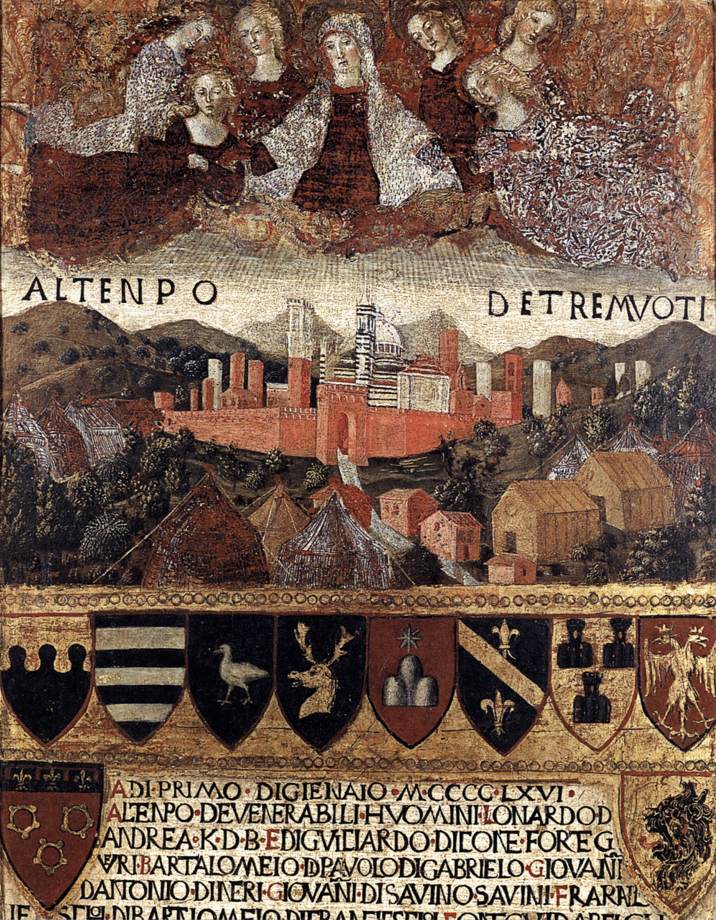If you choose to come to Siena, you choose to visit a city that reached its peak of splendor during the Middle Ages.
Where can you discover the history of Siena?
The frescoes of the Palazzo Pubblico in Siena, the marbles of the Duomo, and the works in the Pinacoteca will have already revealed part of its history.
If this has piqued your interest, you cannot miss a visit to the Museo delle Biccherne di Siena.
The museum is located inside Palazzo Piccolomini, which houses the State Archive of Siena.
Unfortunately, it can only be visited on Saturday mornings at 10:00 AM and 11:30 AM, closing at 1:00 PM. Admission is free, and no reservation is required.
For more information: archiviodistato.siena.it/museo-delle-biccherne/
In addition to the beauty of the archive, which houses very old volumes such as precious miniatures and parchments, visitors can also view documents covering various aspects of Siena’s historical events, spanning from the year 735 to the Unification of Italy.
A special focus is given to the Dante exhibition, with documents featuring characters from the Divine Comedy.
WHAT ARE THE BICCHERNE?
The Biccherna was the financial magistracy of Siena, and the painted wooden tablets with religious, civil scenes, and portraits, used to bind the accounting books of the financial administrations, took their name from it.
In Siena, 105 out of 124 Biccherne are on display, dating from 1258 to the early 18th century. The others have been showcased in museums and private exhibitions in London, Berlin, New York, and Budapest.

WHY IS IT WORTH SEEING THE BICCHERNE?
They are a snapshot of medieval life, much like photographs. The oldest Biccherne depict the Camerlengo (treasurer) and the coats of arms of the provveditori (administrative officers).
Over time, they became more and more elaborate, and many famous artists painted the Biccherne: Ambrogio Lorenzetti, Taddeo di Bartolo, Sano di Pietro, and many others.
Starting from 1460, real paintings were commissioned to replace the Biccherne, to be hung on the walls of the office when the Camerlengo and the provveditori left their positions. These later Biccherne were created by important artists such as Beccafumi and Francesco di Vanni.


Follow Borgo Grondaie di Siena on social media to stay updated on what to do in Siena and the surrounding area!

